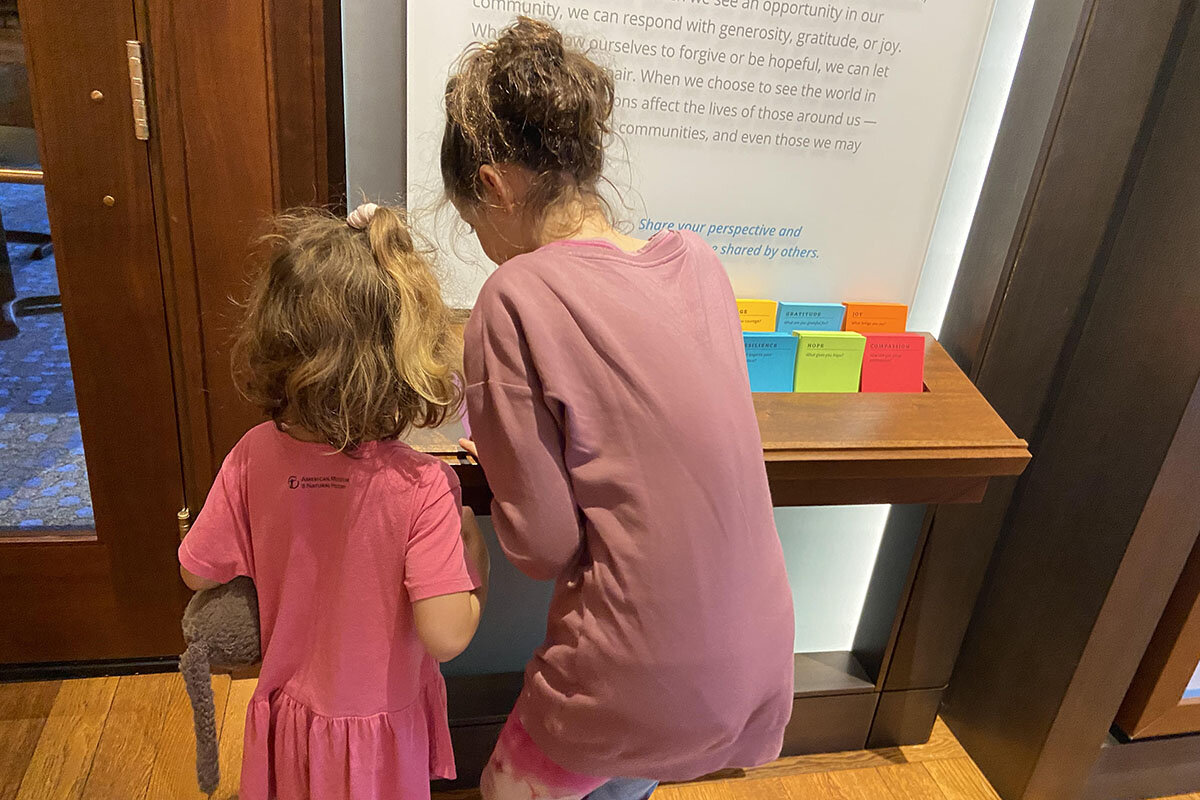Gathering visions of a better world

 Amelia Newcomb
Amelia Newcomb
“Why is there war?”
That’s what the 5-year-old daughter of a colleague’s friend asked a guide recently after visiting the Mapparium, a stained-glass globe visitors can walk through that is located in the same building as the Monitor. Standing literally inside a world on the cusp of global conflict in 1935, when it was created, she cut to the heart of what she was taking in.
That set me thinking about how adults often don’t do that, hampered by heated exchanges or even the expectations of friends. So what happens when you give them space to step away from those constraints? Does that create room for a fuller understanding of news – including values like hope that are often at work, however modestly?
Recent Monitor reporting has addressed how people in the Northern Hemisphere, for example, are coping with a tough winter – and expressing perseverance. How Somalis are coping with a severe jihadist threat – and fighting back in a cooperative effort. In today’s issue, Noah Robertson shares how Ukrainian children are navigating a wartime Christmas – bolstered by those determined to bring joy.
Back in the Mapparium, the guide responded seamlessly. “It’s really silly, isn’t it,” she said, adding that the girl’s generation could make headway in eradicating war. To my colleague, climate writer Stephanie Hanes, that made all the difference. “It wasn’t shutting down the question or making it seem taboo,” she says. “It was empowering.”
Which may explain why the girl and her pals moved quickly to part of the “How Do You See the World?” exhibit near the Mapparium that invites visitors of all ages to post notes about their experiences with resilience, say, or forgiveness.
“There’s a story that is different from the story we’ve accepted,” says Stephanie. She wondered about being more like the 5-year-old who saw the simplicity of what’s wrong and the potential to be part of the progress. “There’s growing recognition of that. It doesn’t have to be this way.”



